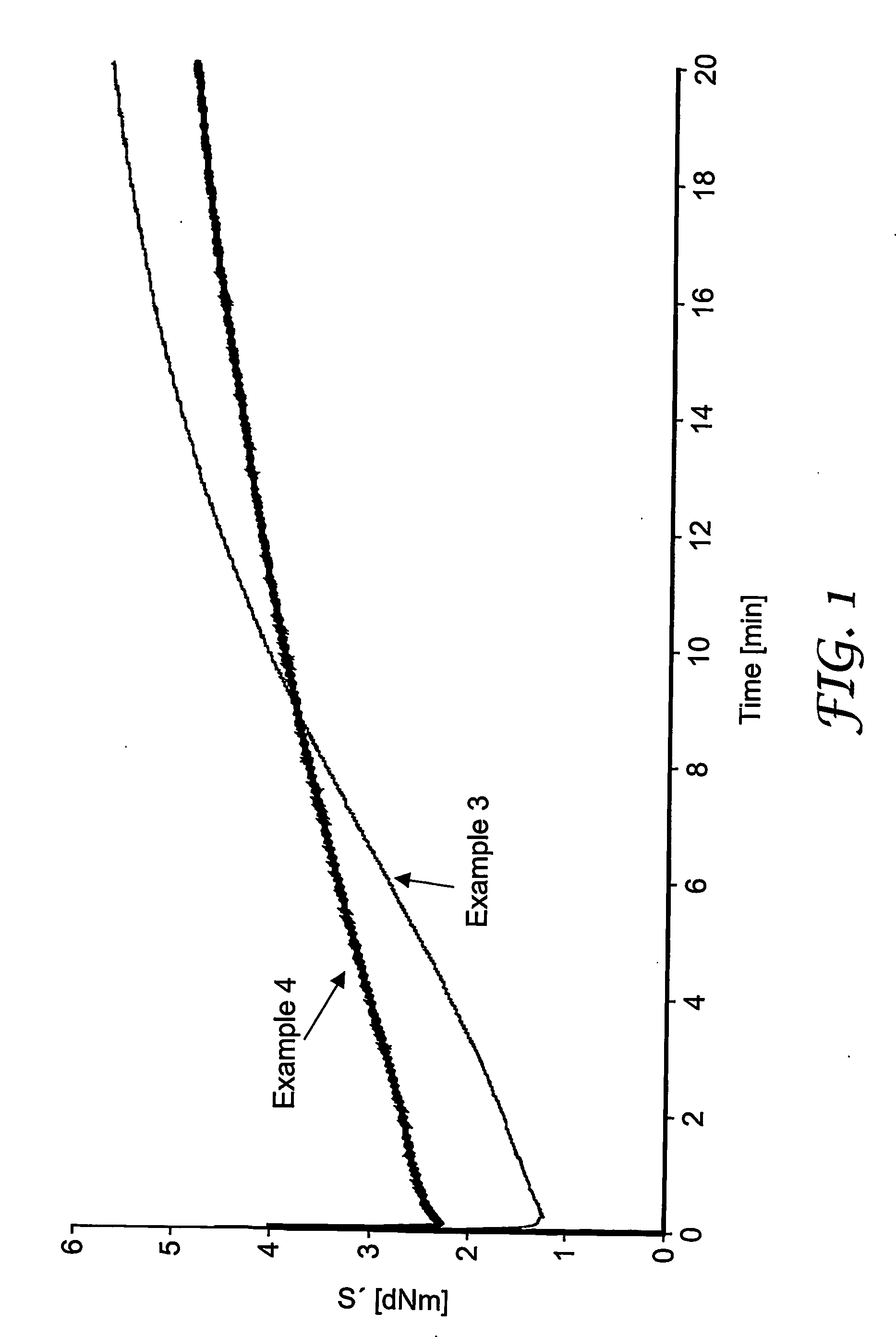Thermally-formable and cross-linkable precursor of a thermally conductive material
- Summary
- Abstract
- Description
- Claims
- Application Information
AI Technical Summary
Benefits of technology
Problems solved by technology
Method used
Image
Examples
example 1
a. Silane Grafting of the Polymer
[0146] A free-radically induced grafting reaction was conducted by first introducing pellets of an ethylene-co-octene polymer having a density of 0.870 g / cm3, melt flow index of 30 g / 10 min (measured at 190° C. according to ASTM D-1238), available as ENGAGE 8400 from Dow Dupont Elastomers (Geneva, Switzerland) into a first extruder (single-screw) with a mixture of vinyl-trimethoxy silane (in the amount of 2.0 parts by weight silane per 100 parts polymer (or 0.66 wt. % based on the total weight of the filled precursor) and dicumylperoxide (in the amount of 0.085 parts by weight per 100 parts polymer or 0.03 wt. % based on the total weight of the filled precursor). The residence time of the polymer in the first extruder was about three minutes.
b. Compounding Grafted Polymer with Thermally-Conductive Filler and Extruding
[0147] The silane-grafted polymer thus formed was fed directly into a second extruder (twin-screw) and compounded with silane-trea...
example 2
[0154] Example 2 was prepared in a manner similar Example 1 with the exception that the amount of catalyst for promoting the moisture curing of the silane-grafted polyethylene film was raised to 0.13 wt. % based on the total weight of the precursor. Tests were conducted on the extruded thermally-conductive film backing and the adhesive tape as in Example 1.
example 3
[0158] A copolymer of ethylene and butyl acrylate (ethylene-co-butyl acrylate) was obtained in pellet form as LOTRYL 35BA40 (ATOFINA, Duesseldorf, Germany). The polymer has a melt flow index of 40 g / 10 min as measured at 190° C. according to ASTM D-1238.
[0159] Dicumylperoxide (0.175 parts per 100 parts polymer or 0.057 wt. % based on the total weight of the precursor) and vinyl-trimethoxy silane (4.7 parts per 100 parts polymer or 1.542 wt. % based on the total weight of the precursor) were mixed together, then added to the pellets and mixed. The mixture then was fed into a single-screw extruder having thermal zones increasing in temperature from 160° C. to 220° C., where grafting of the silane onto the polymer backbone occurred, promoted by thermal decomposition of the peroxide.
[0160] The silane-grafted polymer (100 parts by weight) was then compounded with the magnesium hydroxide (200 parts by weight) in a twin-screw extruder at 170° C., in a manner similar to that of Examples 1...
PUM
| Property | Measurement | Unit |
|---|---|---|
| Temperature | aaaaa | aaaaa |
| Weight | aaaaa | aaaaa |
| Fraction | aaaaa | aaaaa |
Abstract
Description
Claims
Application Information
 Login to view more
Login to view more - R&D Engineer
- R&D Manager
- IP Professional
- Industry Leading Data Capabilities
- Powerful AI technology
- Patent DNA Extraction
Browse by: Latest US Patents, China's latest patents, Technical Efficacy Thesaurus, Application Domain, Technology Topic.
© 2024 PatSnap. All rights reserved.Legal|Privacy policy|Modern Slavery Act Transparency Statement|Sitemap

